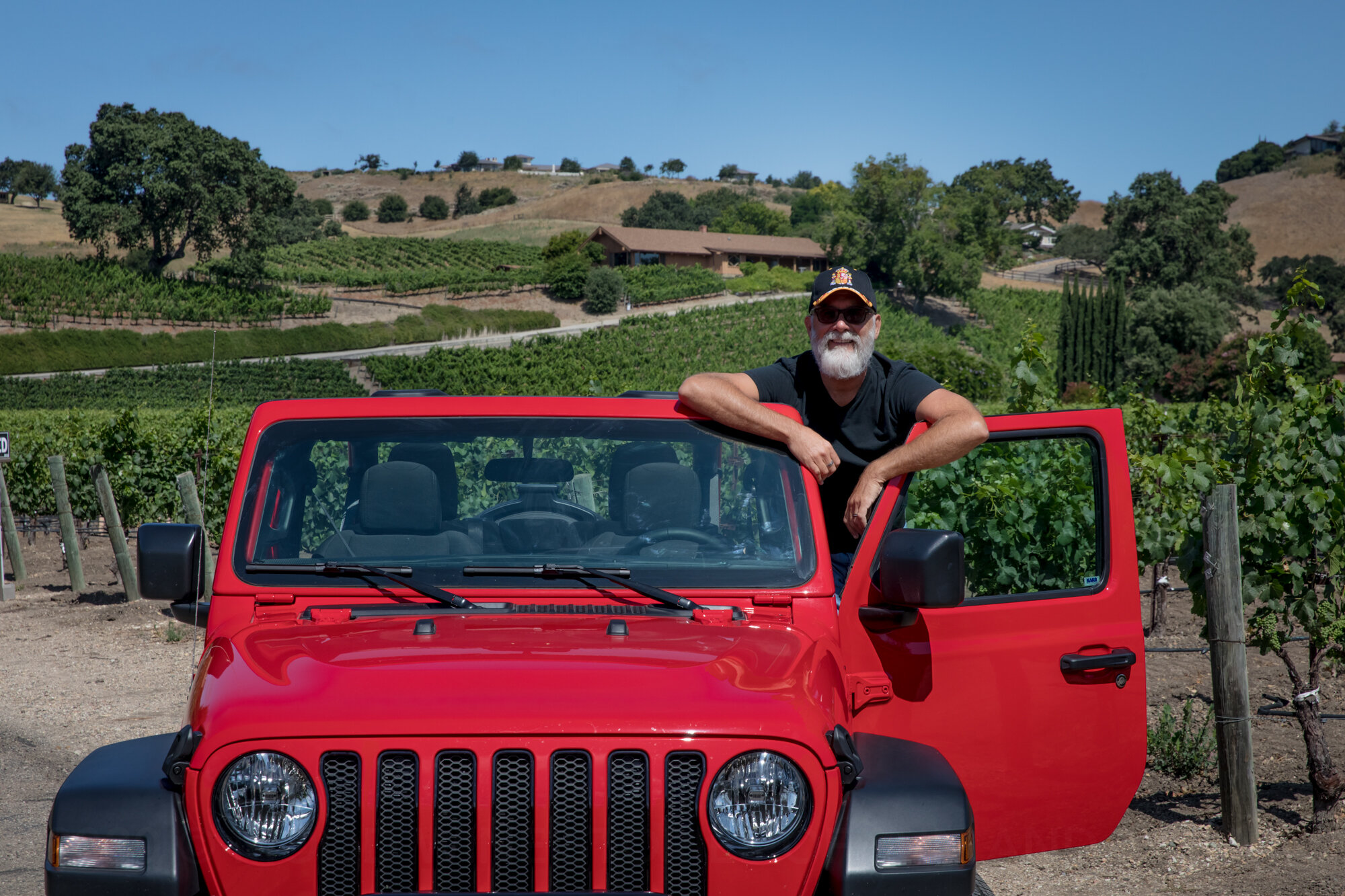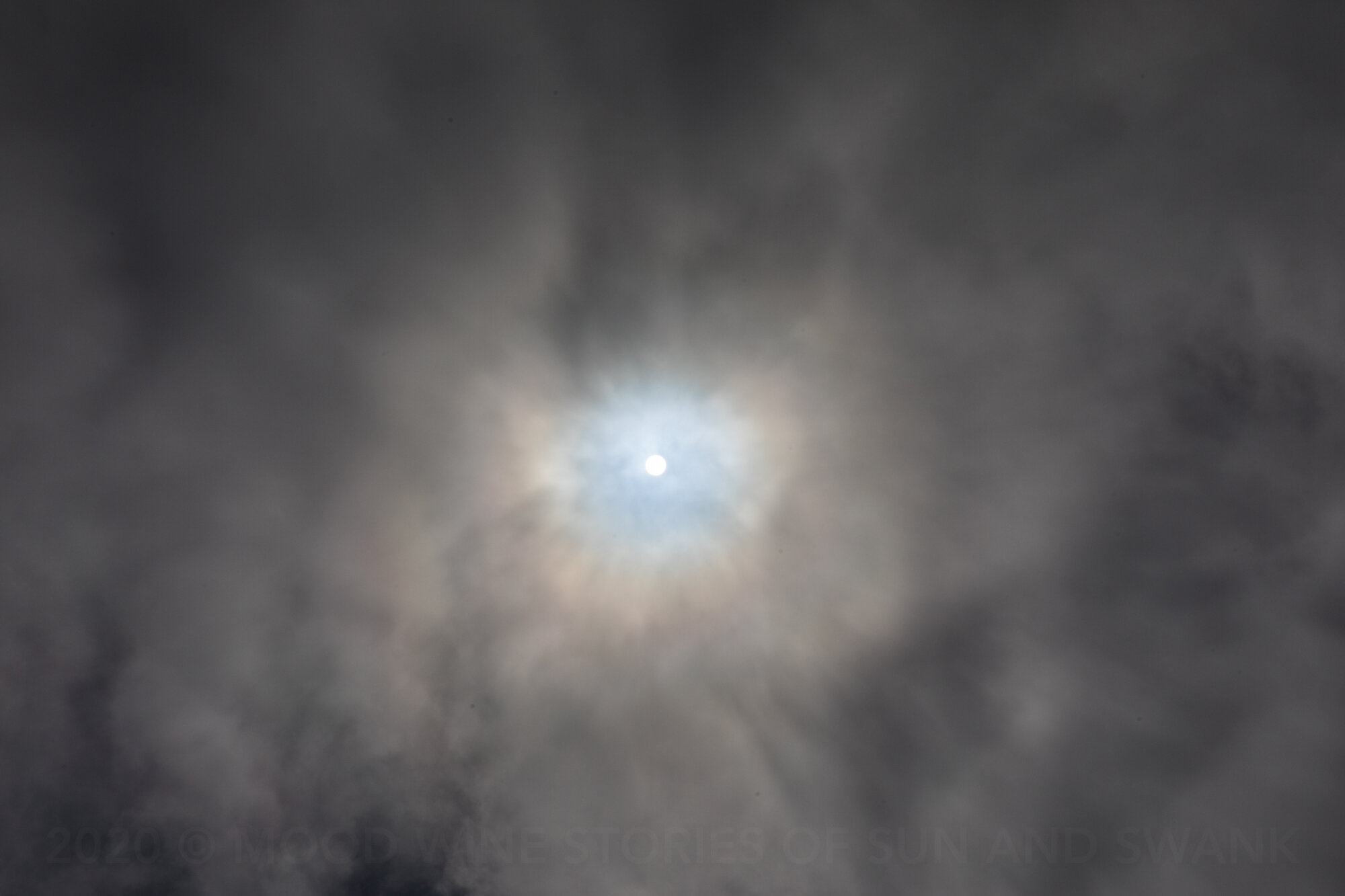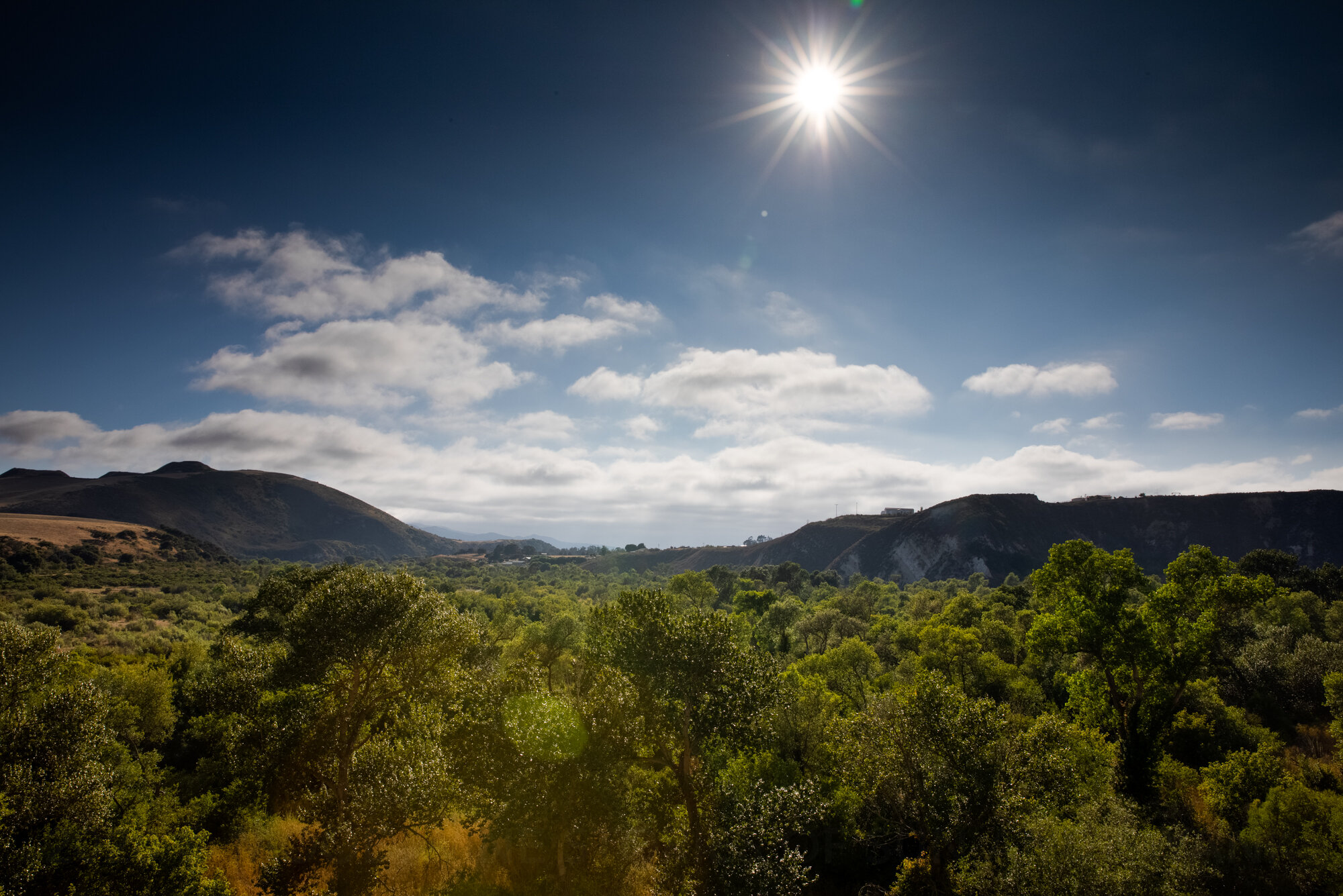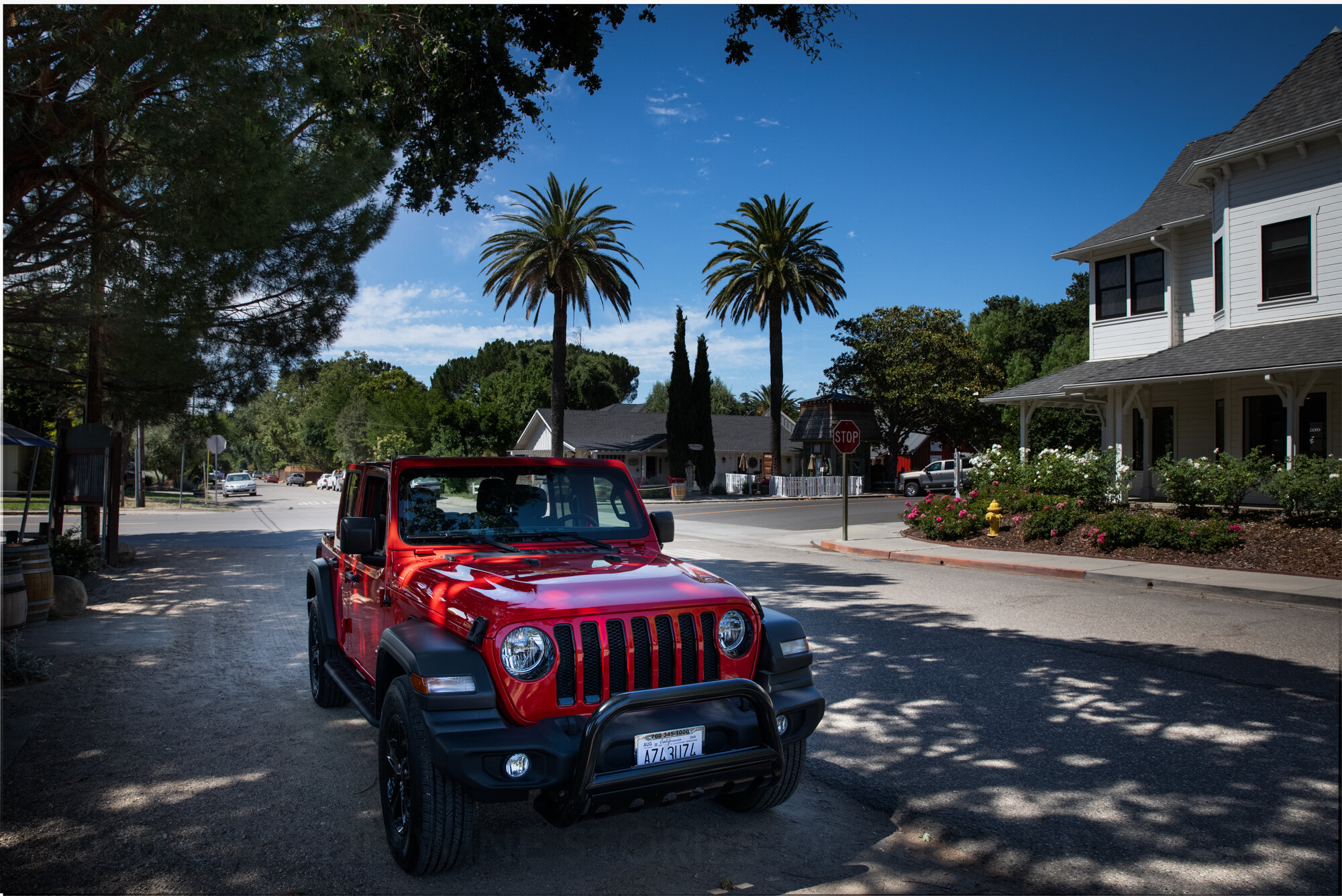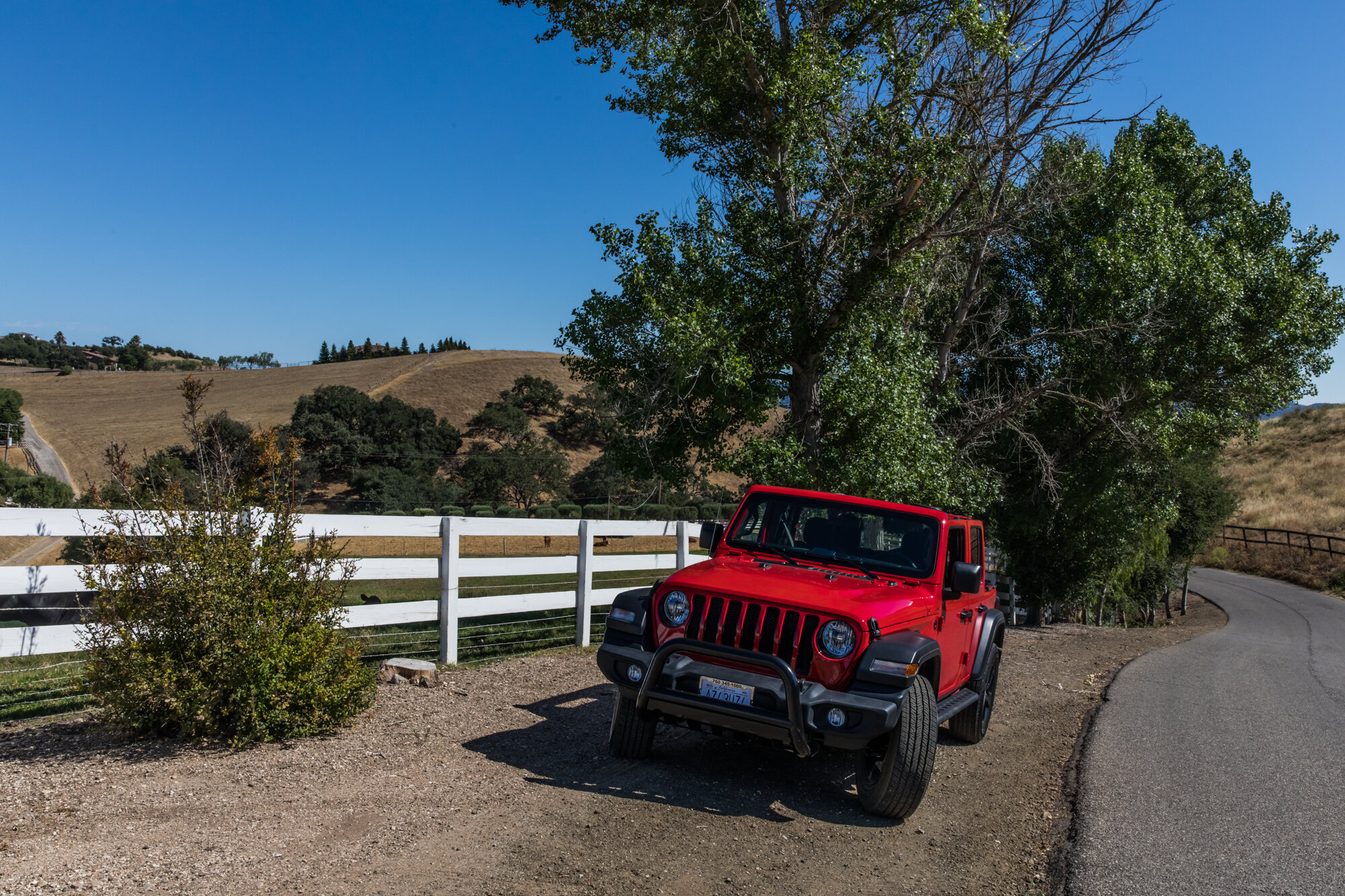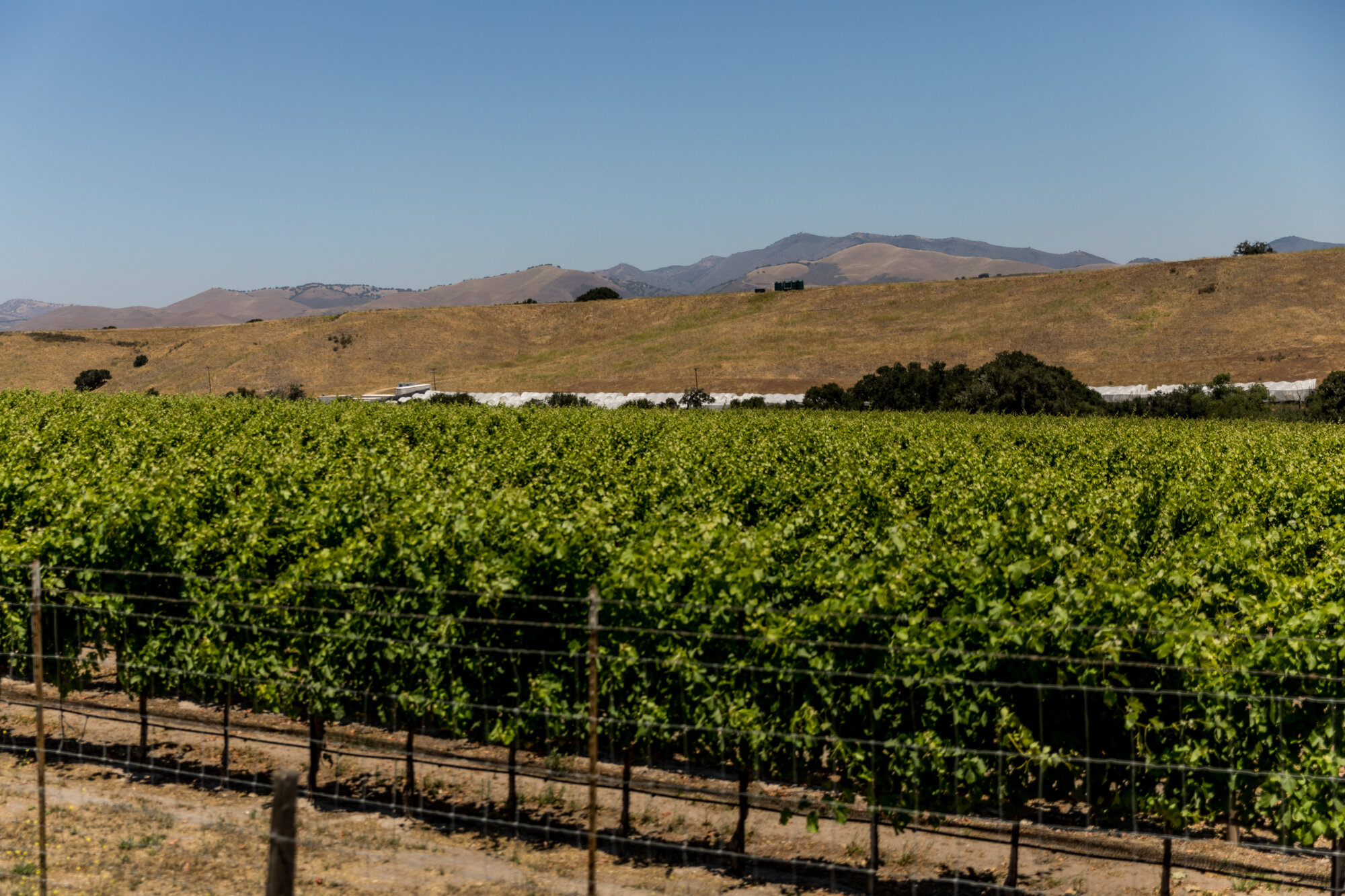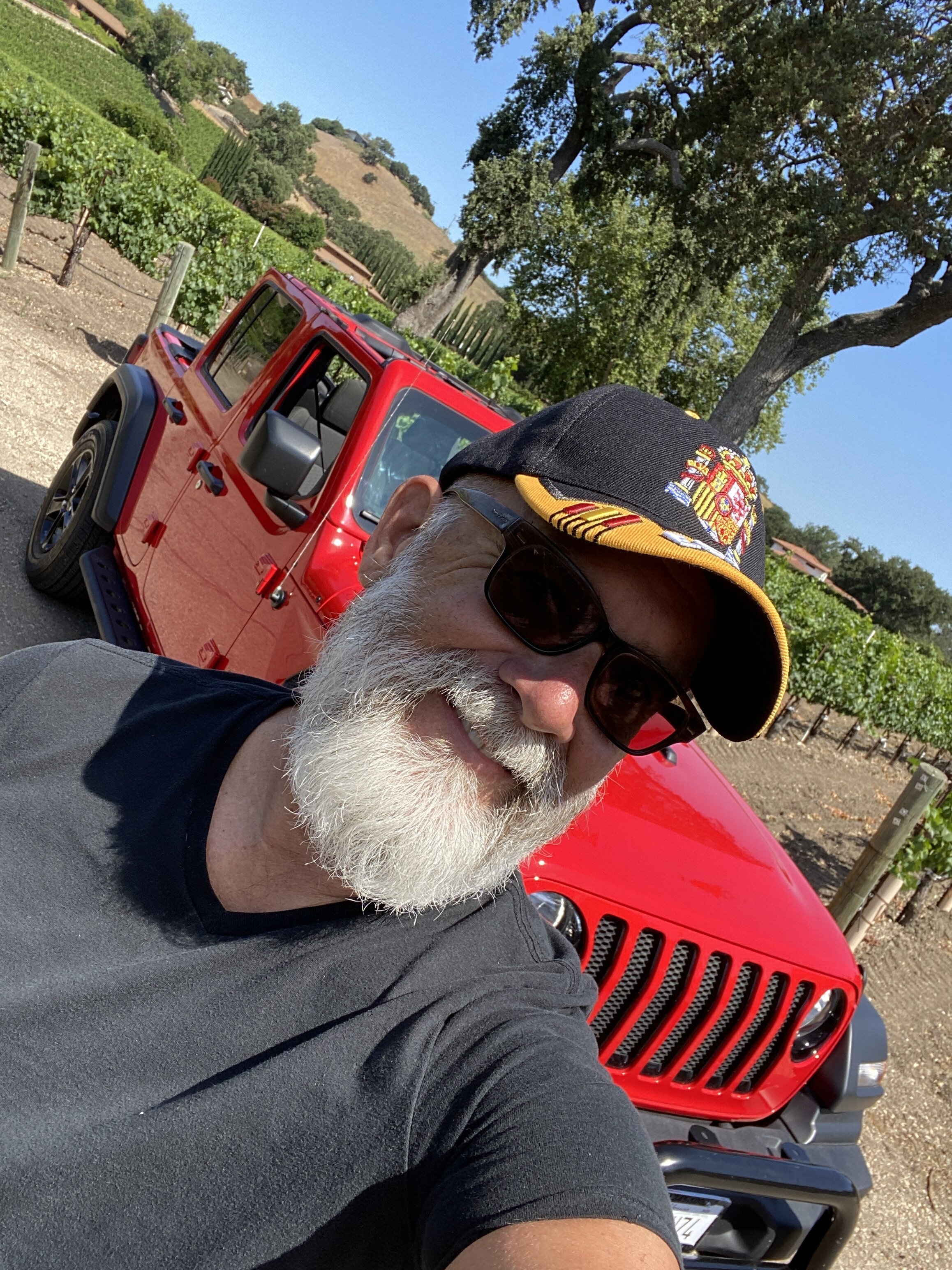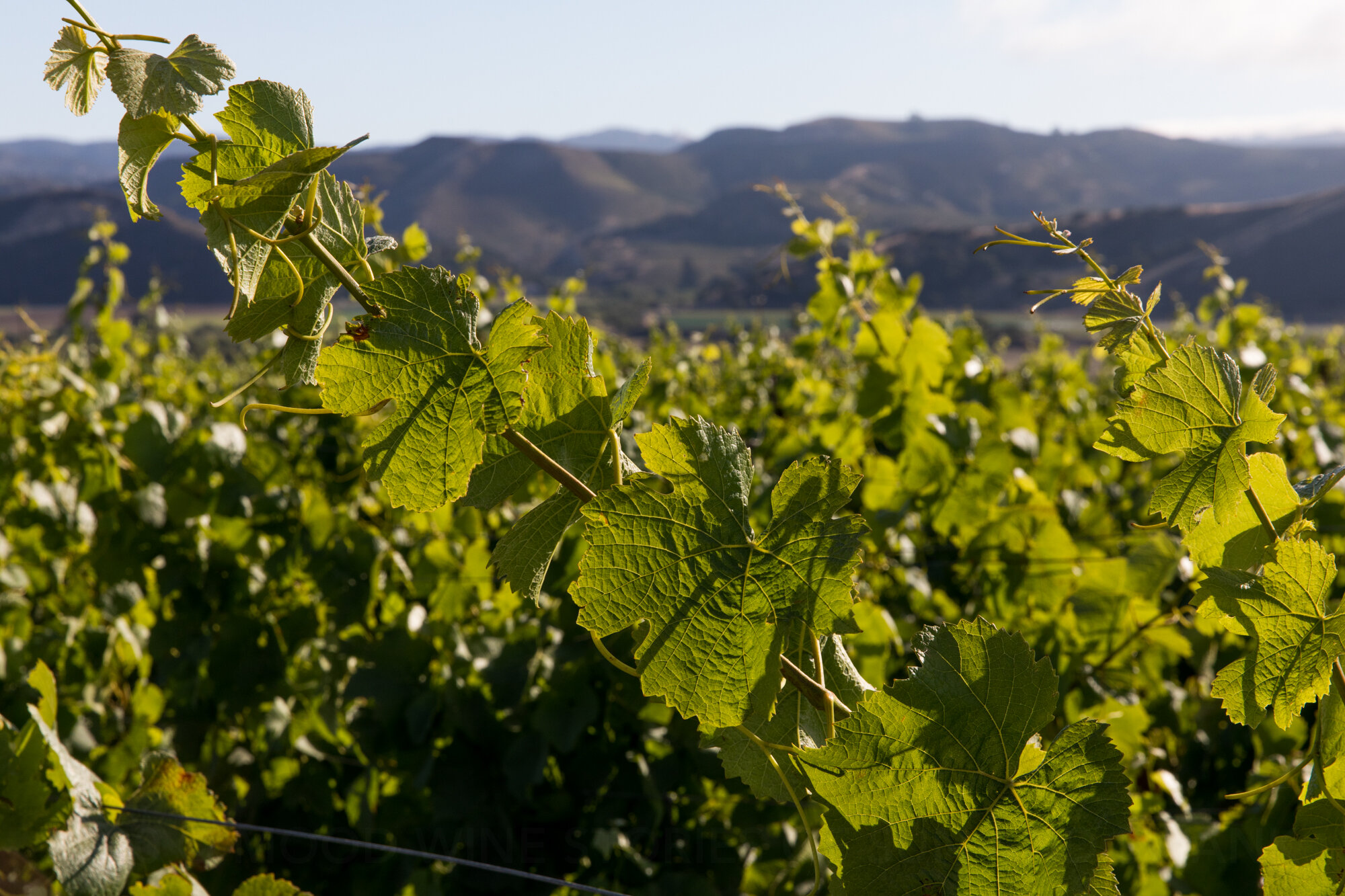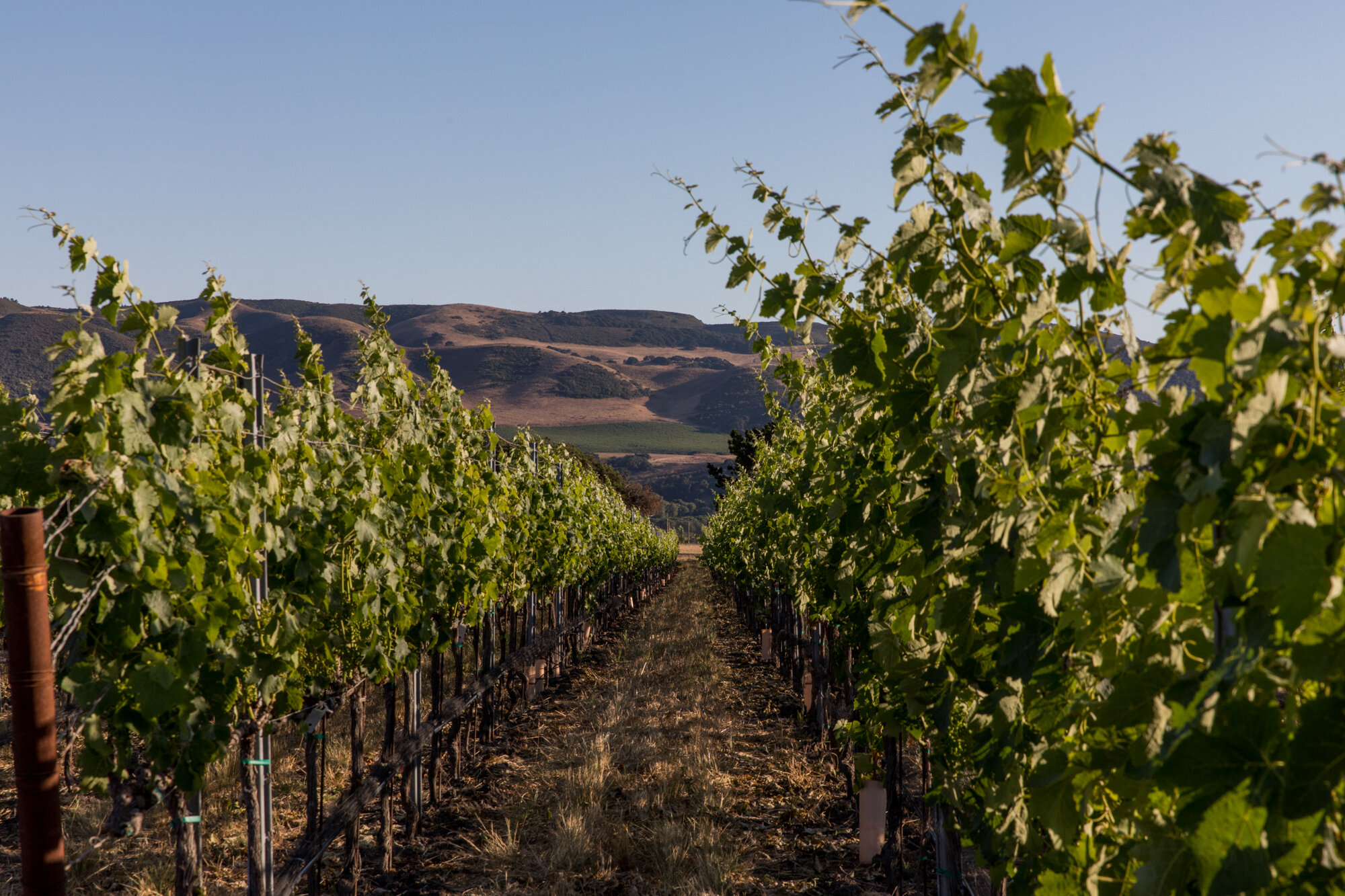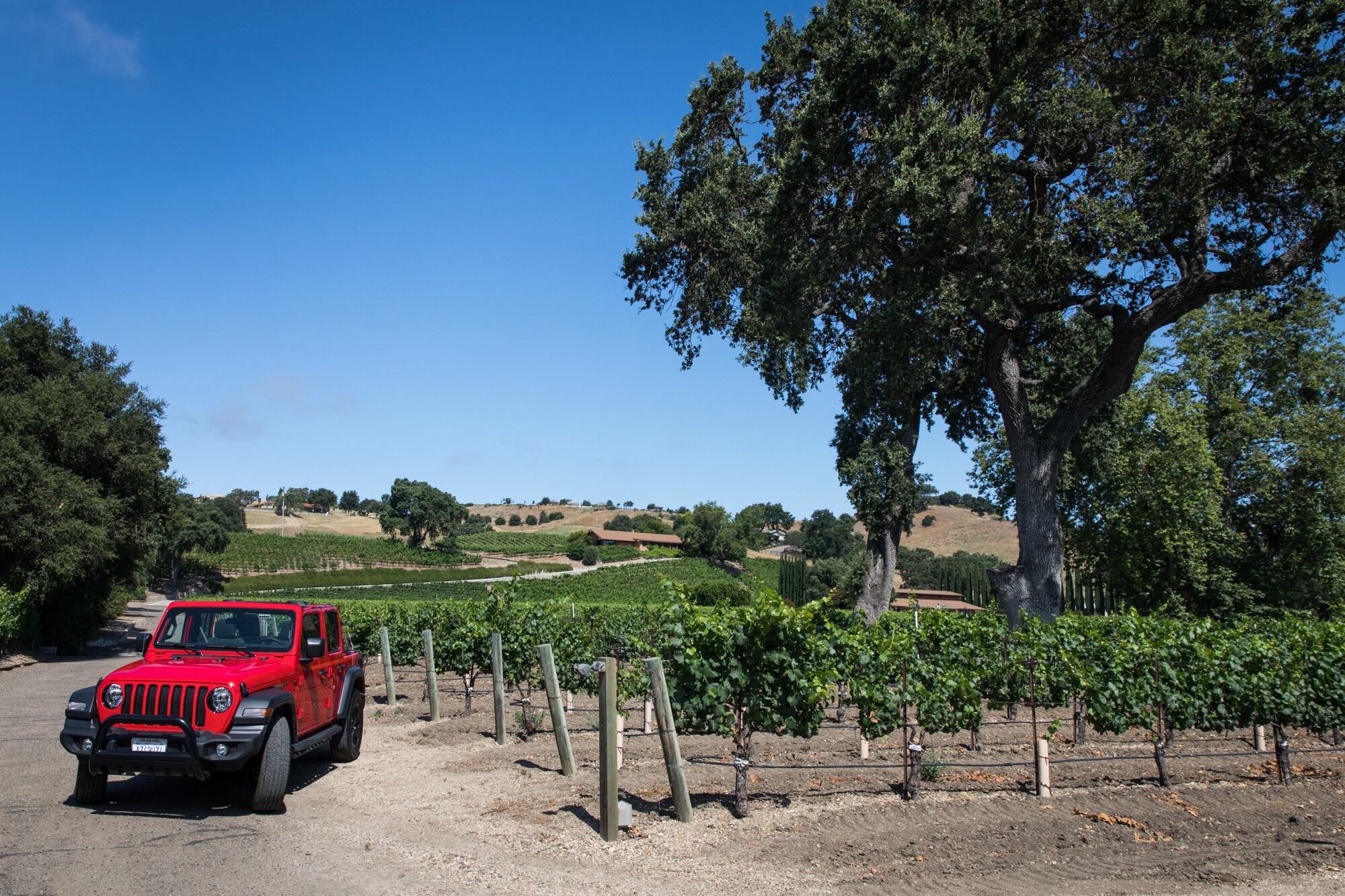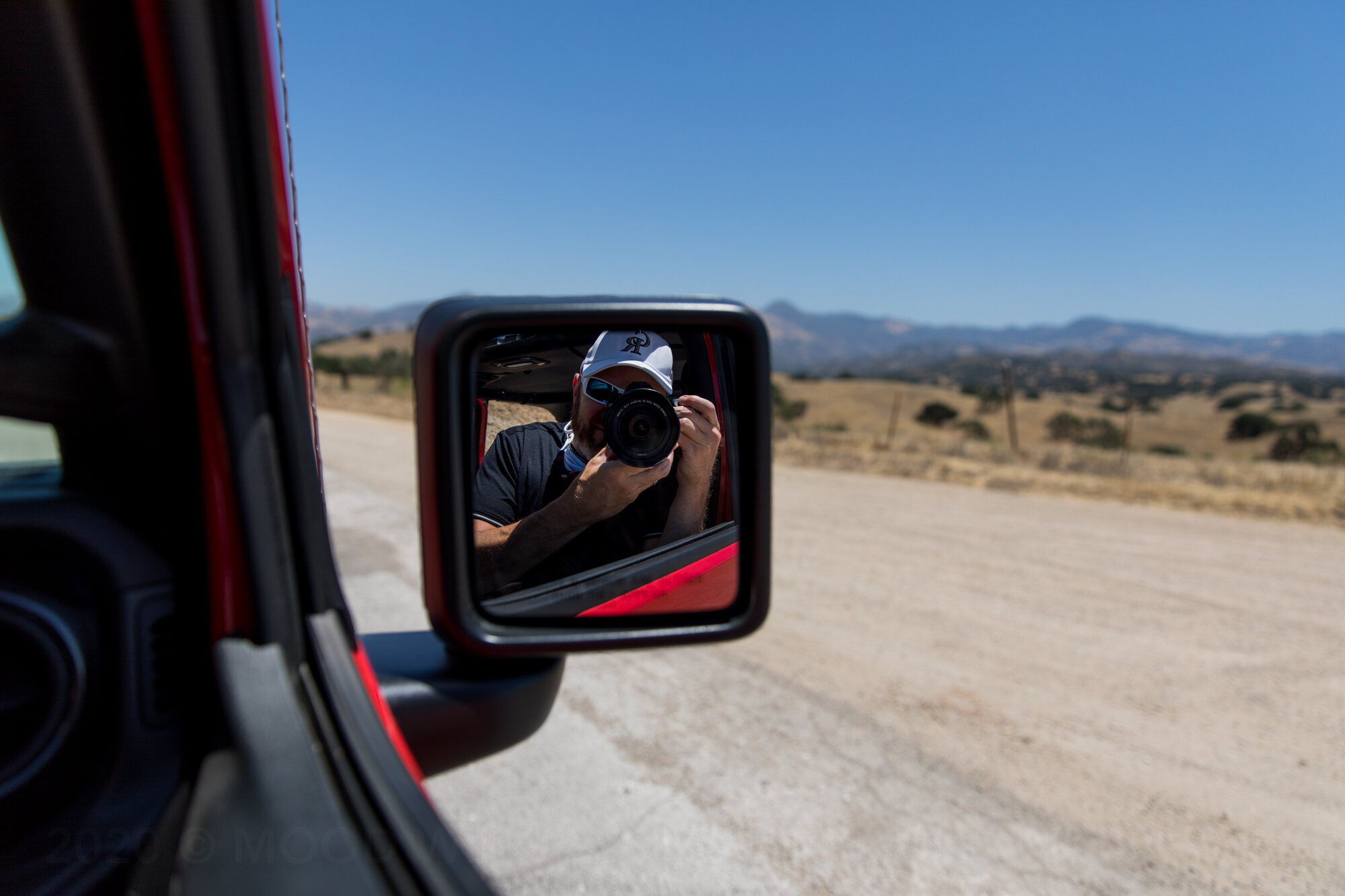SANTA BARBARA WINE COUNTRY
Palm trees, mild salty breezes, and surfers riding big waves on vast beaches—this is what we think of when we think of Santa Barbara, California.
The upscale dining, fancy shopping, and one of California’s largest public universities make the city a vibrant, exotic destination.
A wine lover won’t have to spend much time exploring State Street or the Funk Zone to find beautiful tasting rooms featuring amazing local wines.
We’ve been coming here for years—there’s a shot of us in 2011. Today one of our favorite tasting rooms is Margerum — their Riviera Rosé of Grenache, Counoise, and Syrah—holy cow, what a rosé.
WHERE ARE THE GRAPES?
So where are the vineyards? Where are the grapes?
My map showing the Santa Ynez and Santa Maria River valleys that flow east to west, providing corridors for the cold Pacific marine layer to slide up into wine country every night.
The answer to that lies about an hour north of the city, over the top of the Santa Ynez Mountains.
It’s hard to overstate how special this wine region is. Wine “experts” often dismissively include this region in a larger “Central Coast” category that also includes Paso Robles, another notable wine region another hour north, in San Luis Obispo County.
Such lazy classification disrespects both regions.
Paso Robles is known for big, complex, fruit-forward wines featuring Zinfandel, Grenache, Syrah, and other Rhône grapes.
FOR WHAT IS SANTA BARBARA WINE COUNTRY KNOWN?
In our video tour of the region, we ask different Santa Barbara winery experts, What is Santa Barbara county’s identity as a wine region?
They readily acknowledge this is not an easy question to answer.
Here is our answer: spectacular diversity.
The region’s unique geography, featuring the longest transverse (east to west) river valley on the entire Pacific coast of the Americas, both North AND South America, makes it spectacularly diverse in terms of microclimates—perhaps the world’s most diverse.
This is because the transverse ridges and river bottoms allow the cold Pacific marine layer to flow inland in the spring and summer, providing ideal grape-growing conditions.
SHOTS OF THE MARINE LAYER COMING IN
As you move inland from Lompoc past the town of Santa Ynez toward Lake Cachuma, in July the air temperature rises one degree Fahrenheit per mile. In Lompoc, it can be 75°F, while at the west end of the Happy Canyon AVA, it can be 105°F or even hotter in the middle of the afternoon. Then, as in all California wine regions, cool air begins to move in from the Pacific, creating dreamy afternoon breezes and cool nights that keep the grapes from producing too much sugar. The ease with which the air moves up these broad valleys makes this wine region both cooler and warmer than Sonoma or Napa, depending on where you’re standing.
What does that mean for a wine lover?
This region can produce some of the world’s finest Pinot Noir, some of the world’s finest Syrah, some of the world’s finest Chardonnay, some of the world’s finest Sauvignon Blanc, and more—all of it happens within BIKING distance.
The Santa Ynez River valley twists and turns through the Santa Rita Hills AVA. In the distance, from this shot, you can see Fiddlehead and Seasmoke Pinot Noir vineyards. The view is east.
Vines in the Santa Rita Hills AVA
Here is a list of the AVAs in Santa Barbara wine region (as of 2020) and for what they’re known:
Sta. Rita Hills AVA (Lompoc to Buellton, in the western part of the valley): Pinot Noir and Chardonnay that can rival French Burgundy in quality, character, and complexity… it’s said “Santa Rita” but spelled “Sta. Rita” in order to distinguish the region from one of the same name in Chile
Ballard Canyon AVA (between Solvang and Los Olivos, in the middle of the valley): amazing northern Rhône-style Syrahs are possible here
Los Olivos District AVA (between Ballard Canyon and Happy Canyon): a variety of outstanding grapes can be grown here, including Bordeaux-style grapes (Cabernet Sauvignon, Merlot)
Happy Canyon AVA (eastern edge of the wine region): hot weather and dry conditions can produce excellent Cabernet Sauvignon and Syrah
Santa Ynez Valley AVA contains the above AVAs, plus additional vineyards and wineries
Santa Maria Valley AVA contains another extensive variety of climates. This is also the oldest official AVA on California’s Central Coast. In the heart of the AVA lies Bien Nacido, a collection of some of California’s most revered vineyards. Planted 50 years ago, the vineyards produce outstanding Pinot Noir, Chardonnay, and other varietals. Many different local wineries source coveted Bien Nacido grapes, so regardless of the wine label, Bien Nacido’s a safe bet the wine is going to be way above average in quality. One other interesting fact: Bien Nacido, with about 800 planted acres, is one of a handful of state-licensed viticultural nurseries. Their hard work, in concert with the world-class enology program at the University of California-Davis, has paid off. These nurseries have provided many of the cuttings used to plant most of the California Chardonnay vineyards in the last 20 years.
Expect more AVAs to be designated in the county, as a way of distinguishing and recognizing the different microclimates.
“Look for Bien Nacido vineyards on any Santa Barbara County wine label.”
WHERE WE WENT
Los Olivos: still quaint
LOS OLIVOS
We always start here.
What a quaint wine country village! With dozens of tasting rooms, you can spend the day tasting without ever getting in your car. Not only that: these tasting rooms feature wines from all over the county, allowing you to experience the astonishing variety of the entire region.
If you want to experience the true charm of a small town in the heart of wine country, Los Olivos is an excellent choice.
Other towns:
Buellton, home of the Hitching Post made famous by the film Sideways; it’s centrally located and a great place to stay
Lompoc is home to some tasting rooms, including Longoria
Solvang… How to describe Solvang? It’s the Disney World Epcot version of Denmark. Cute and popular, but not our thing.
Santa Ynez is home to the Chumash people, who have lived in this part of California for 11,000 years or more, and whose small family of languages differs as much from neighboring Indian languages as English differs from Japanese. As you might exepct, they have a casino. Their museum and cultural center, however, lies in Thousand Oaks.
Tercero, in Los Olivos
WINERIES
Tercero tasting room in Los Olivos, for a variety of stunning local wines, from Cabernet Franc to rosé of Mourvèdre (our article and photographs here)
Storm tasting room in Los Olivos, for one of the best California Sauvignon Blancs we have ever tasted, as well as a variety of top notch Pinots (our article and photographs here)
Sunstone winery outside Santa Ynez, for a sumptuous Viognier (our article and photographs here)
Foxen winery in the Santa Maria Valley AVA, for an array of local wines showcasing the diversity possible in this region (our article and photographs here)
Worth noting: Jalama tasting room way out in Palm Springs features excellent estate wines from the Santa Rita Hills AVA
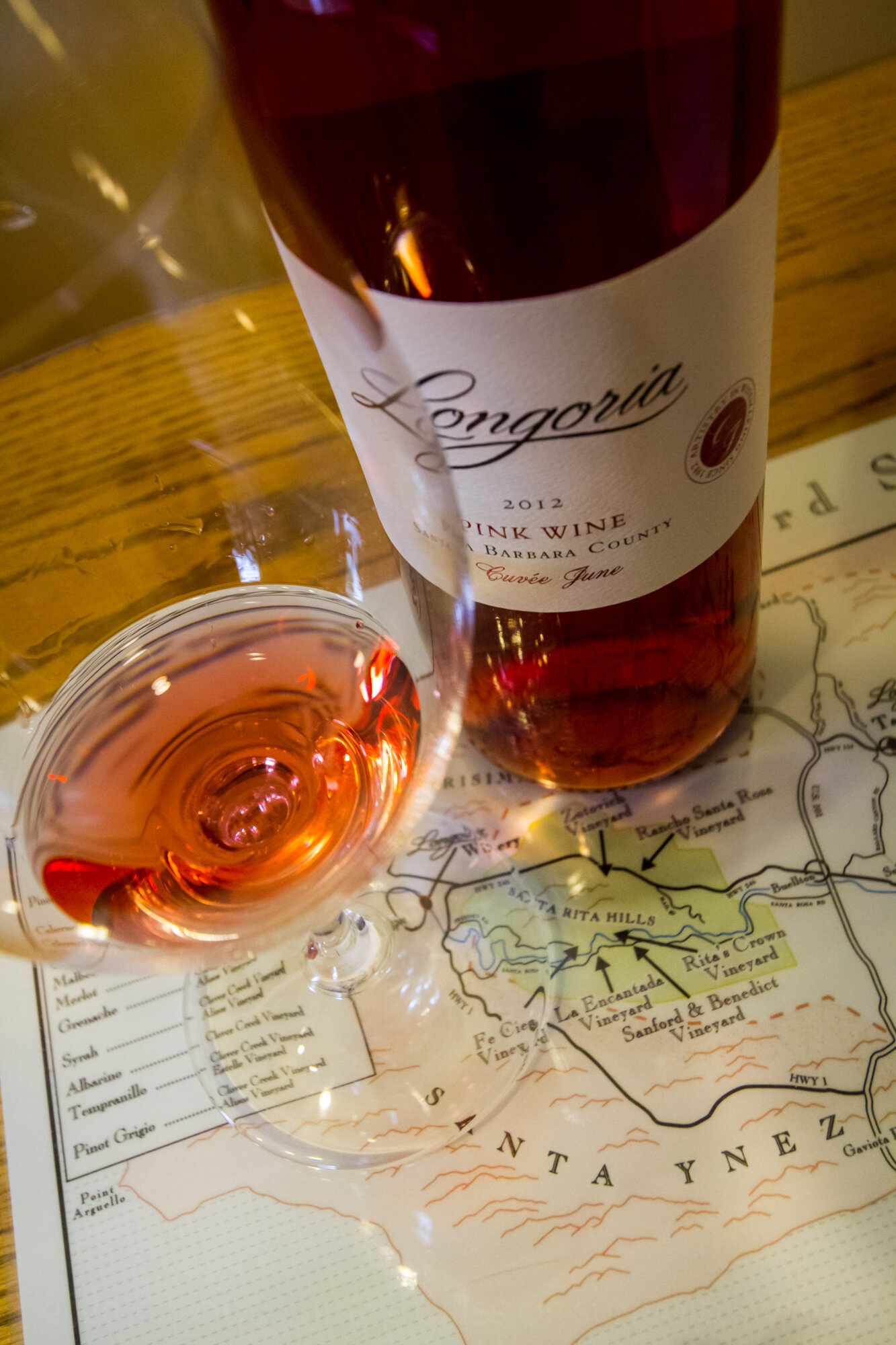
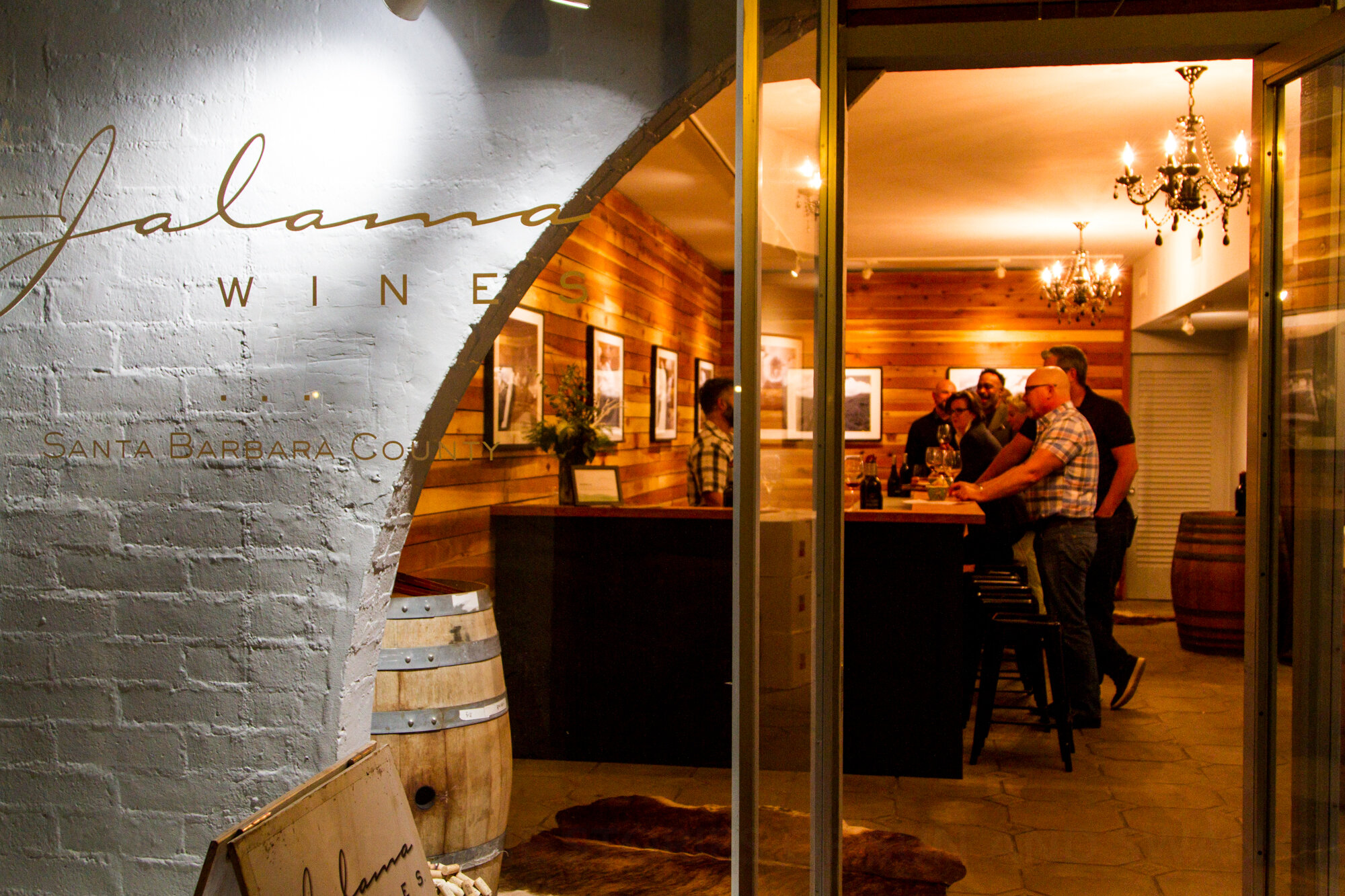
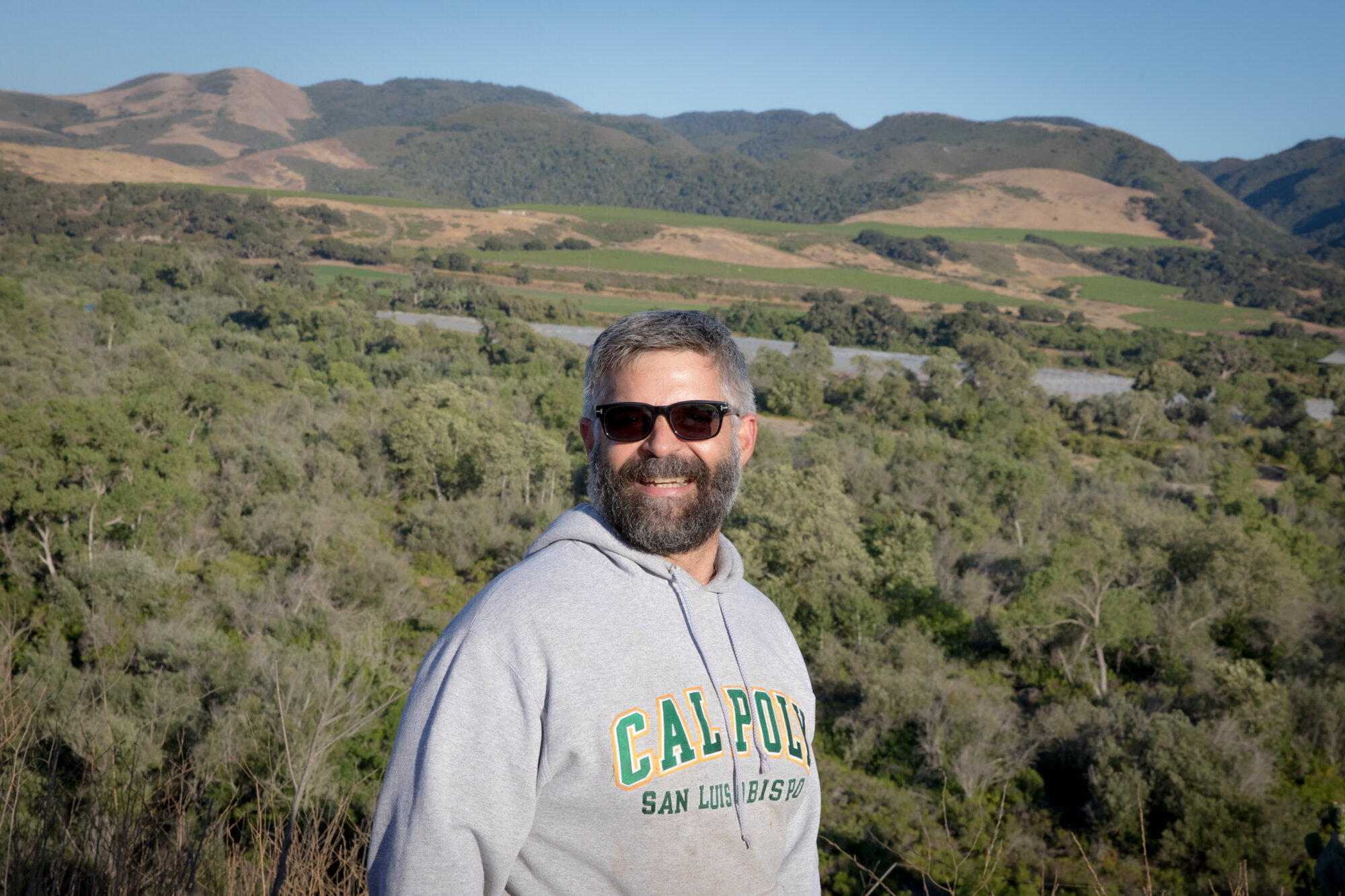
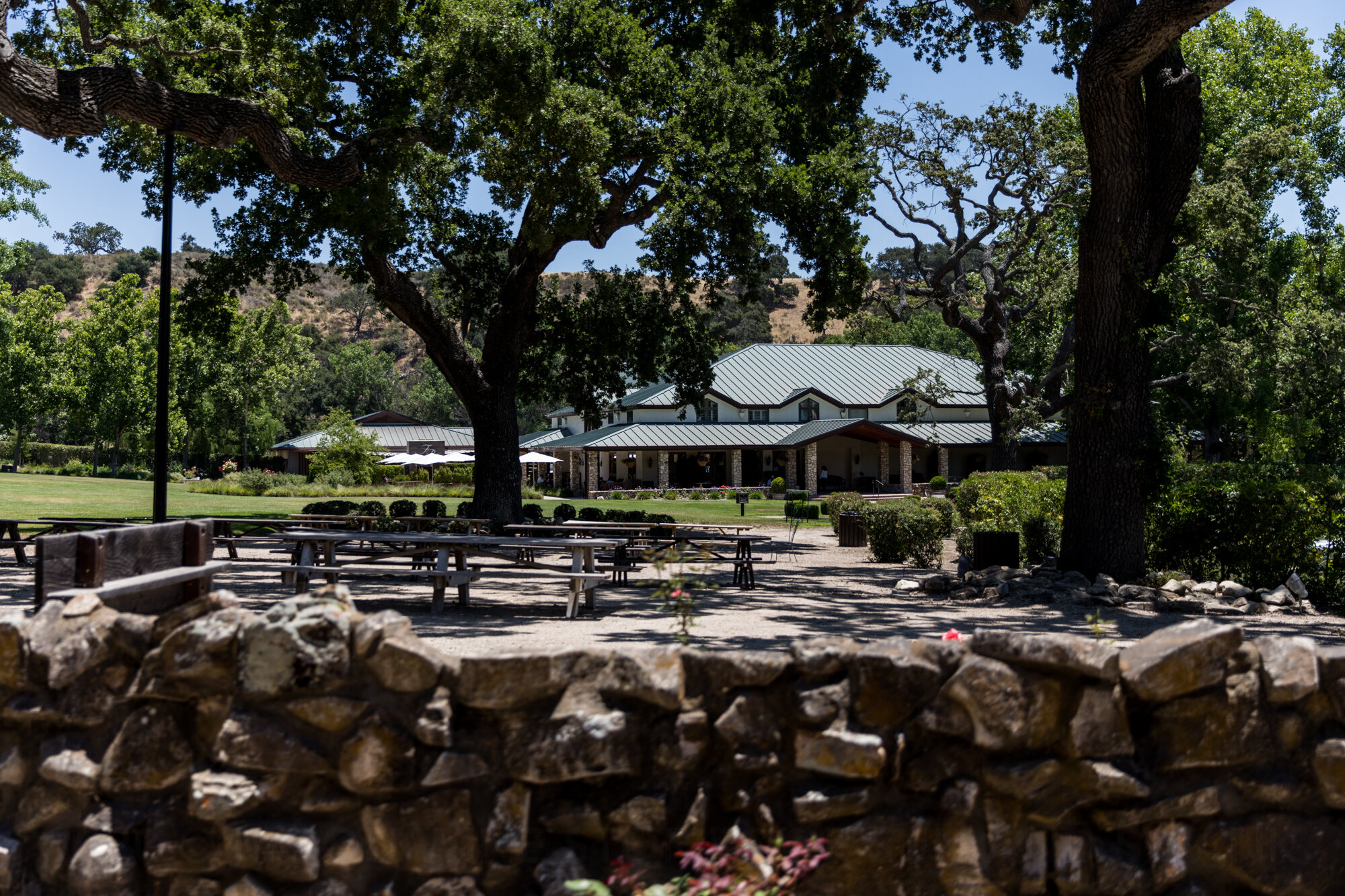
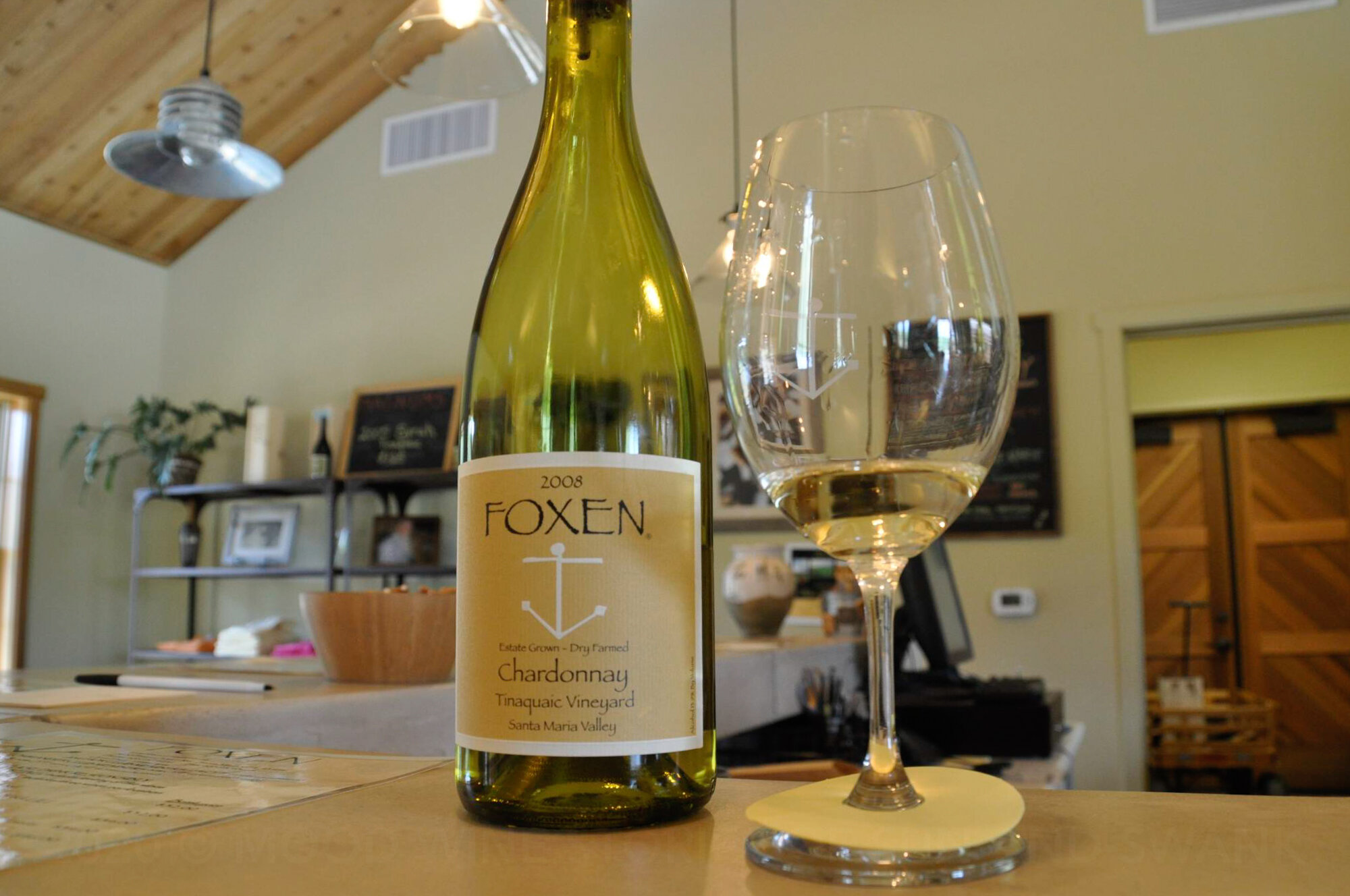
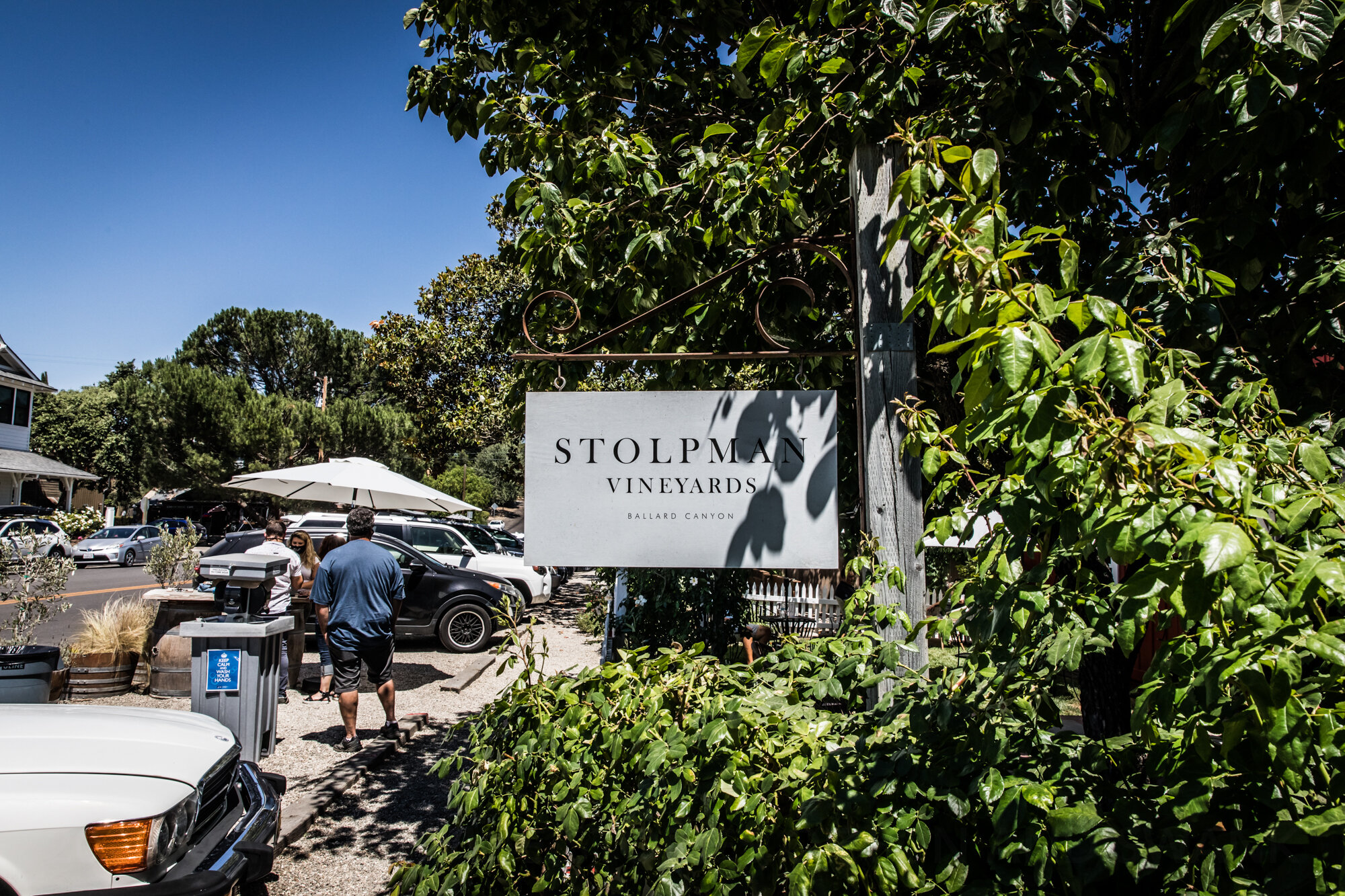

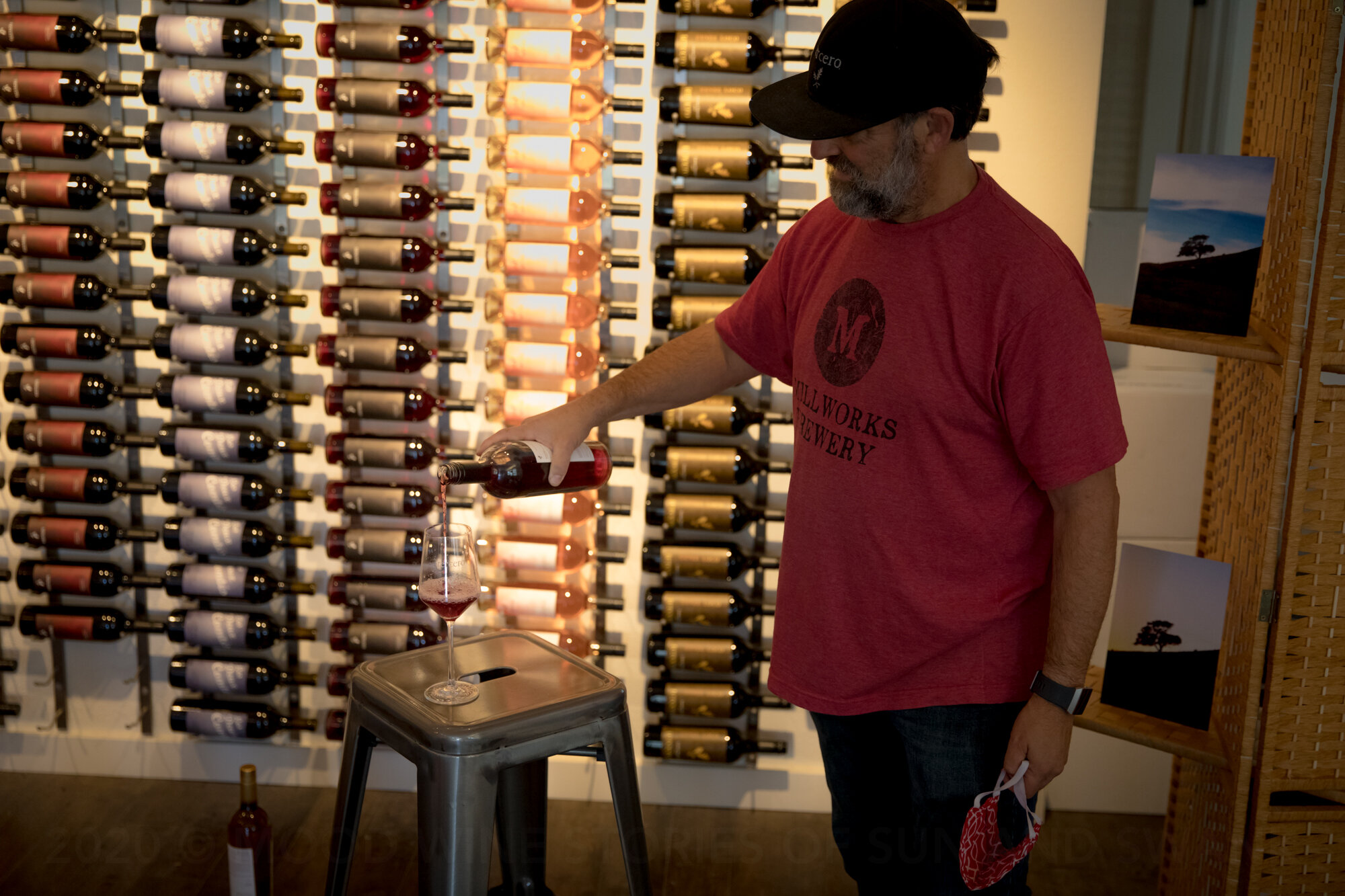
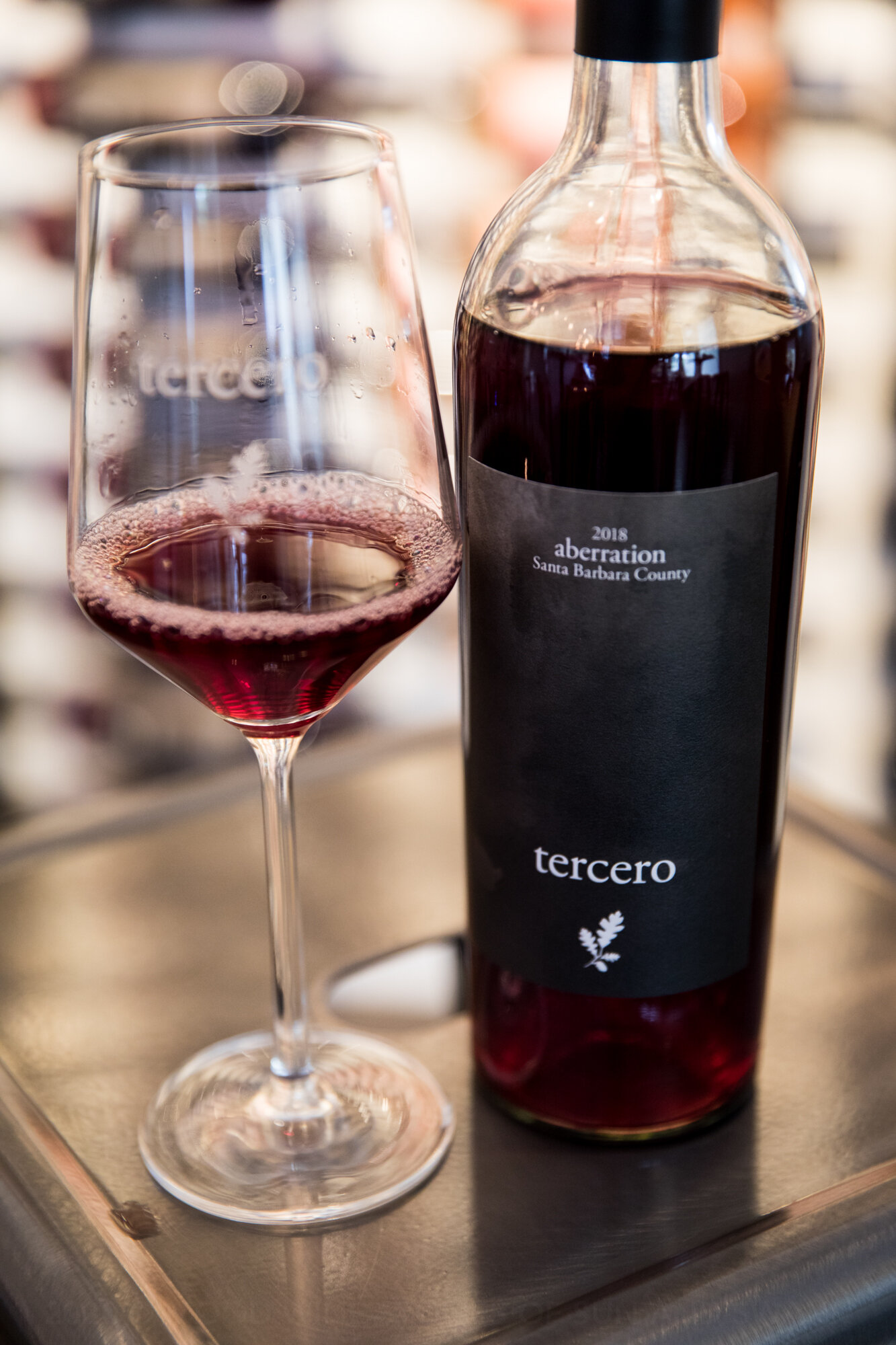
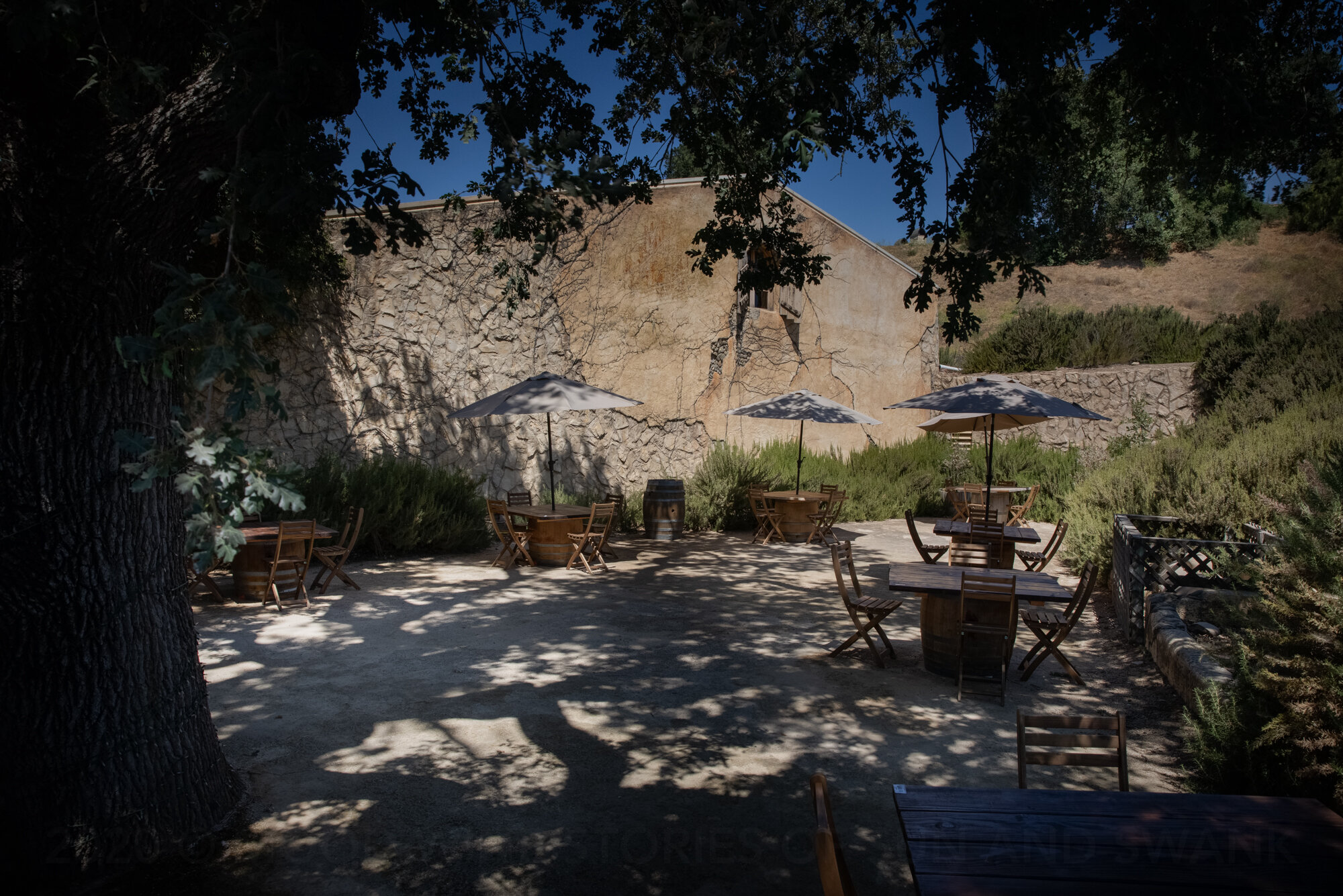
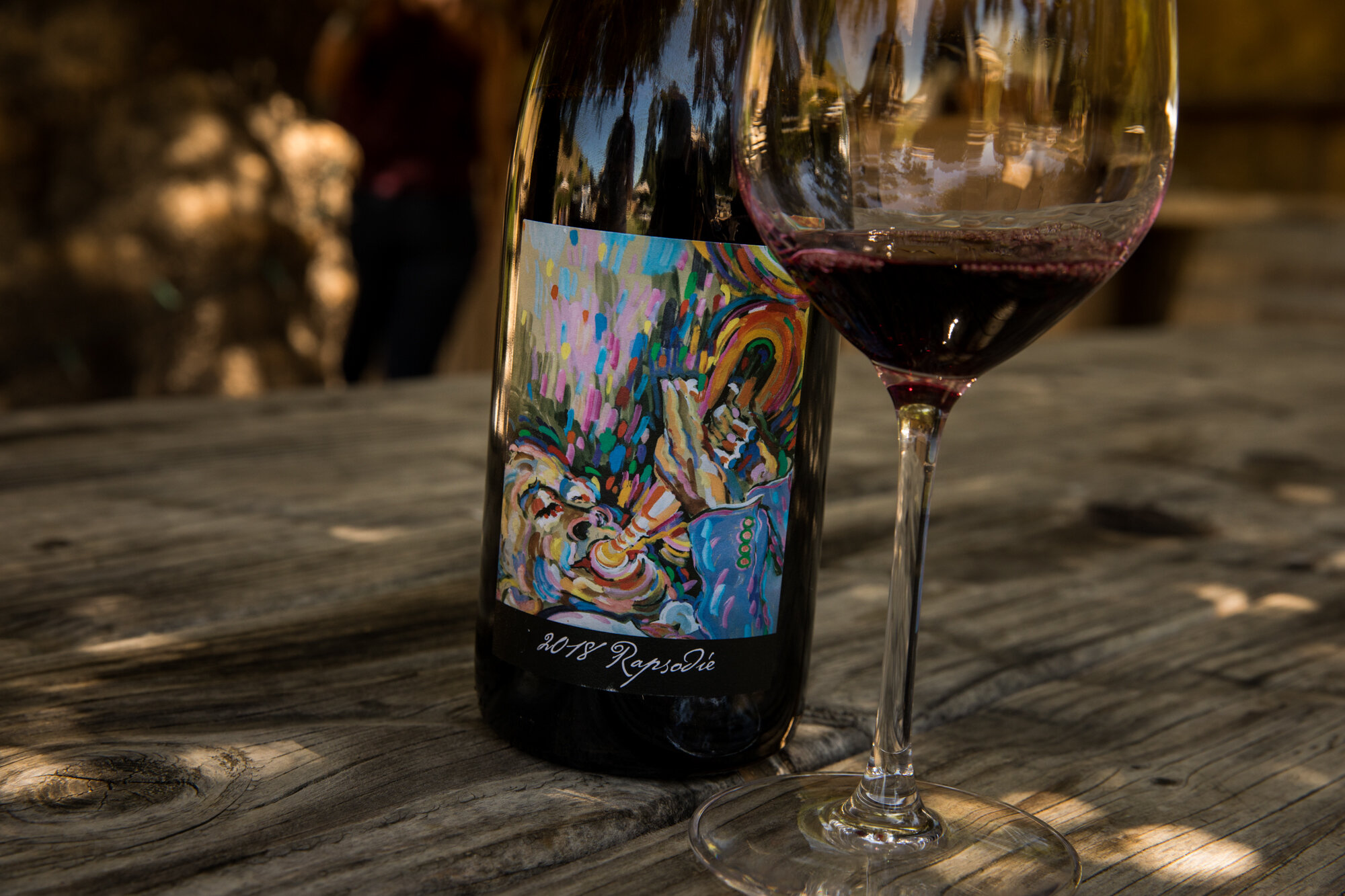
RESTAURANTS
The COVID crisis precluded the sort of fancy dining out experience we would normally have, but fortunately, we can recommend two outstanding outdoor dining establishments:
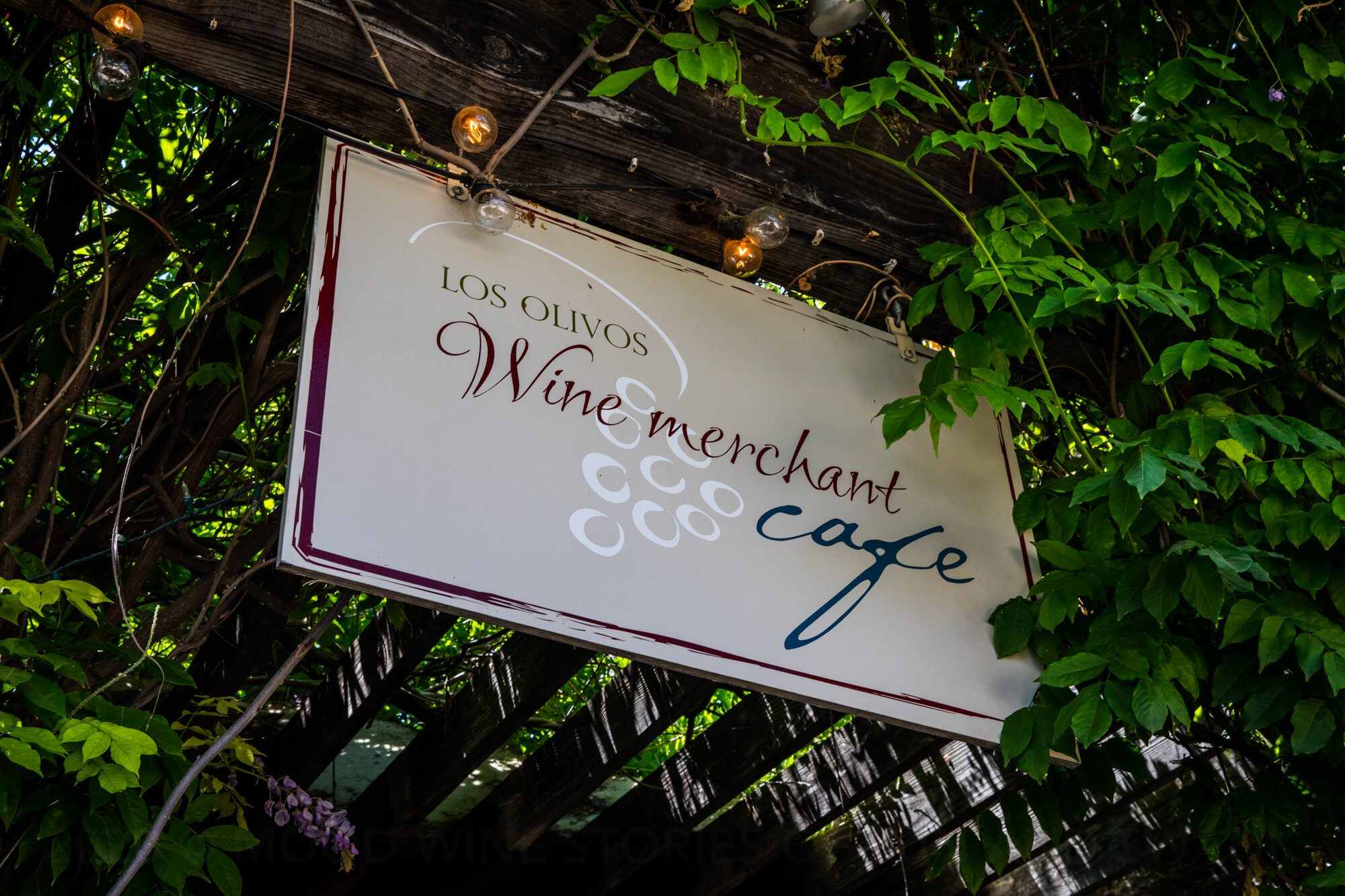

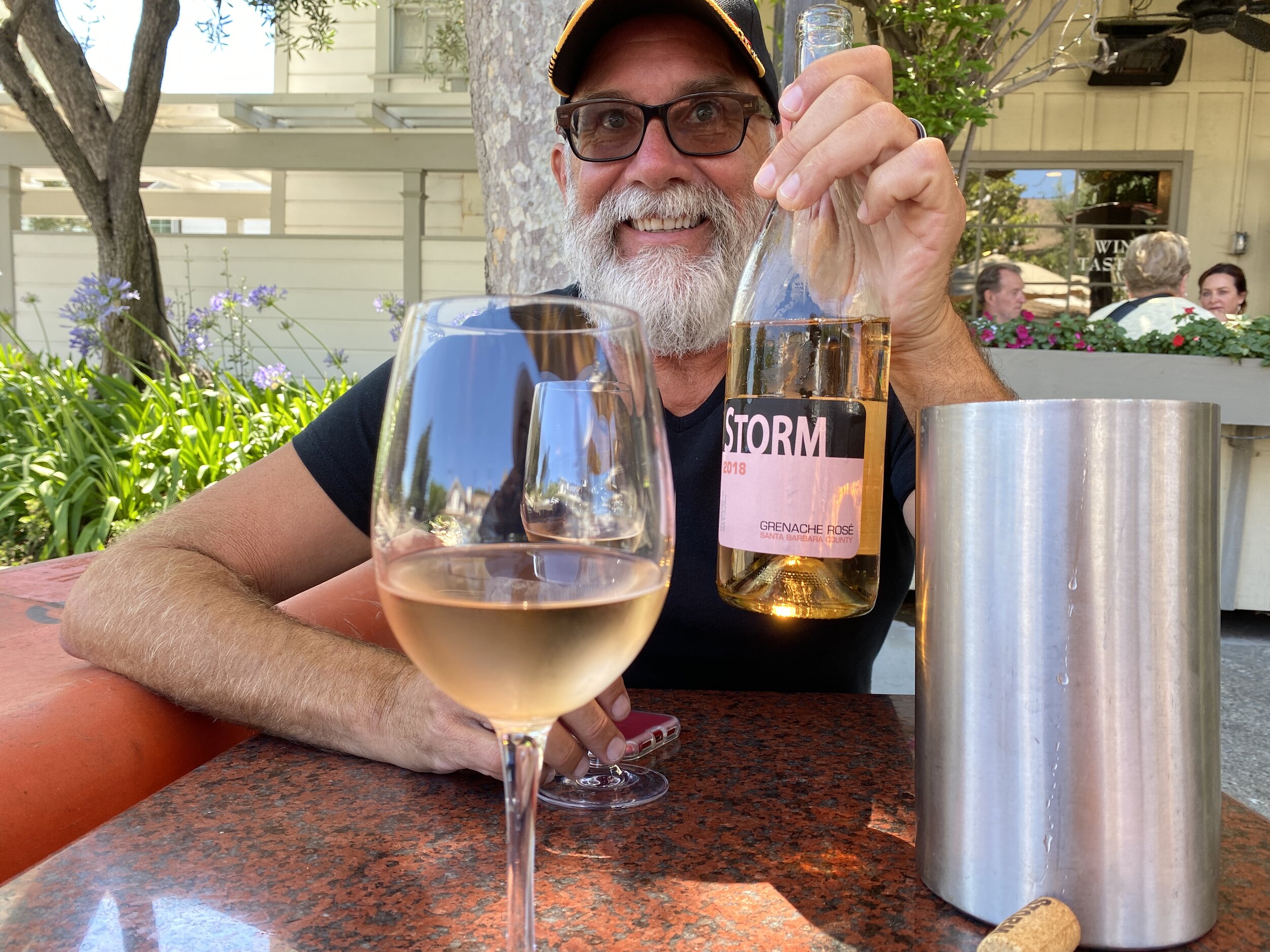
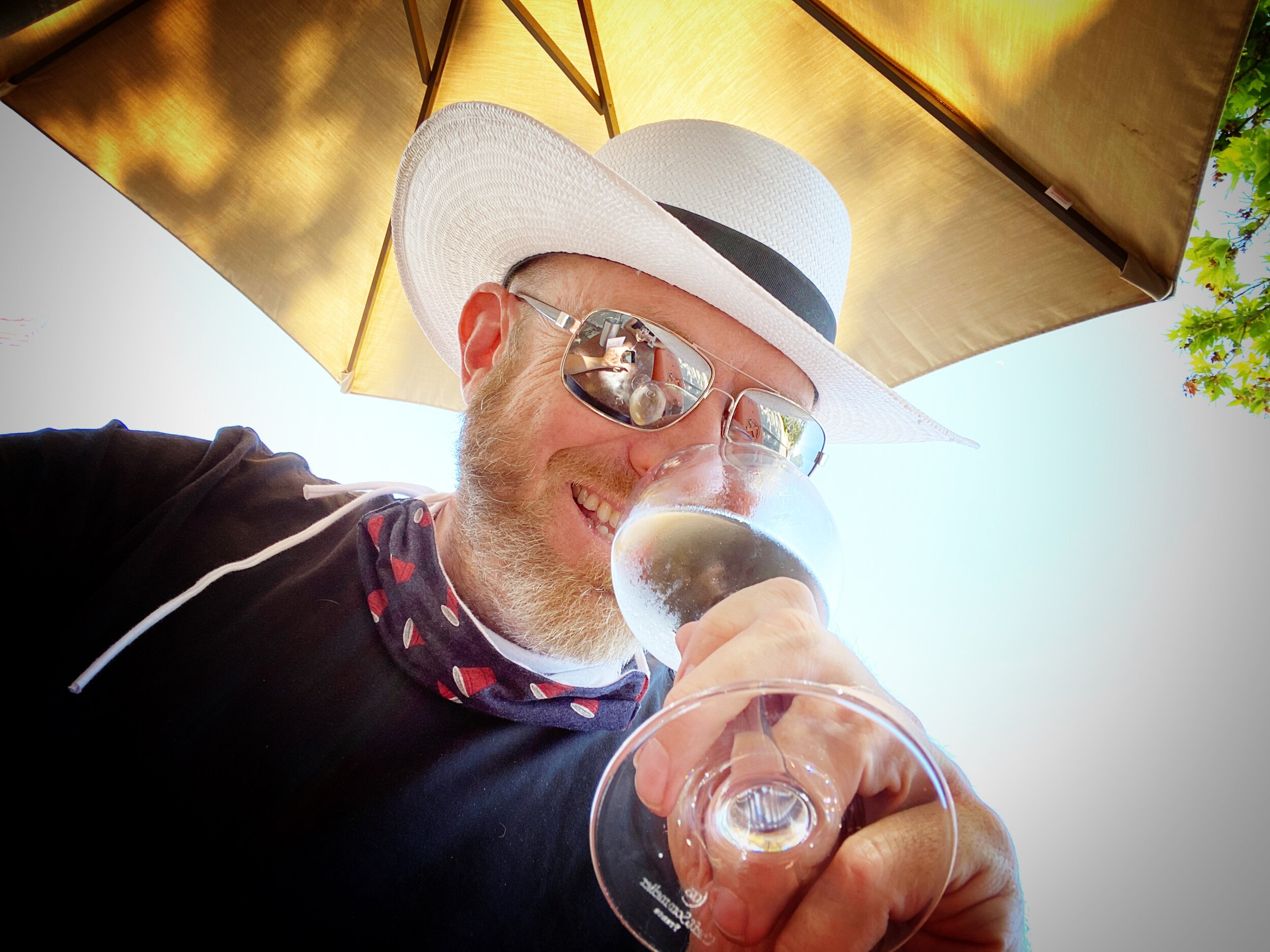
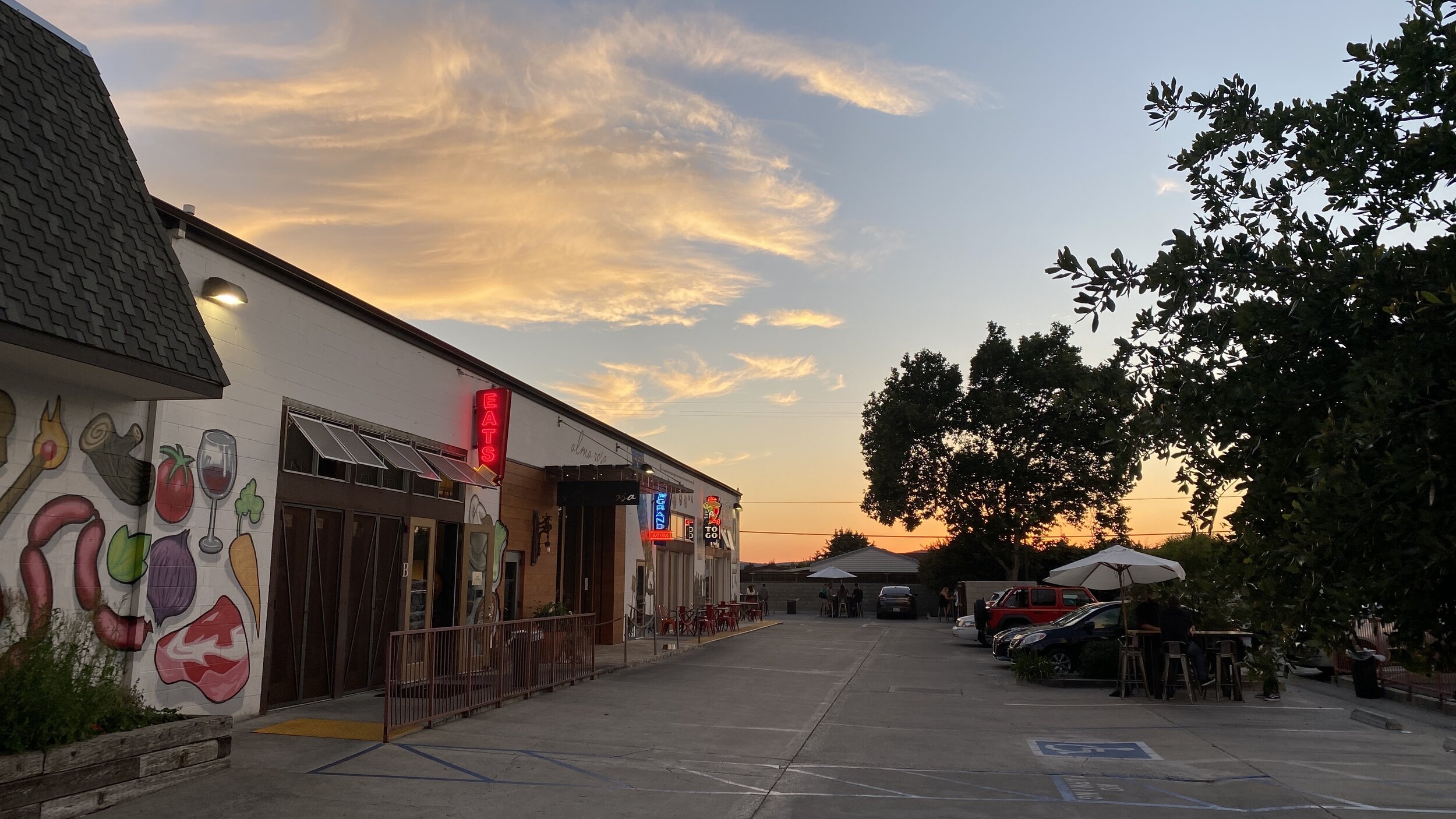
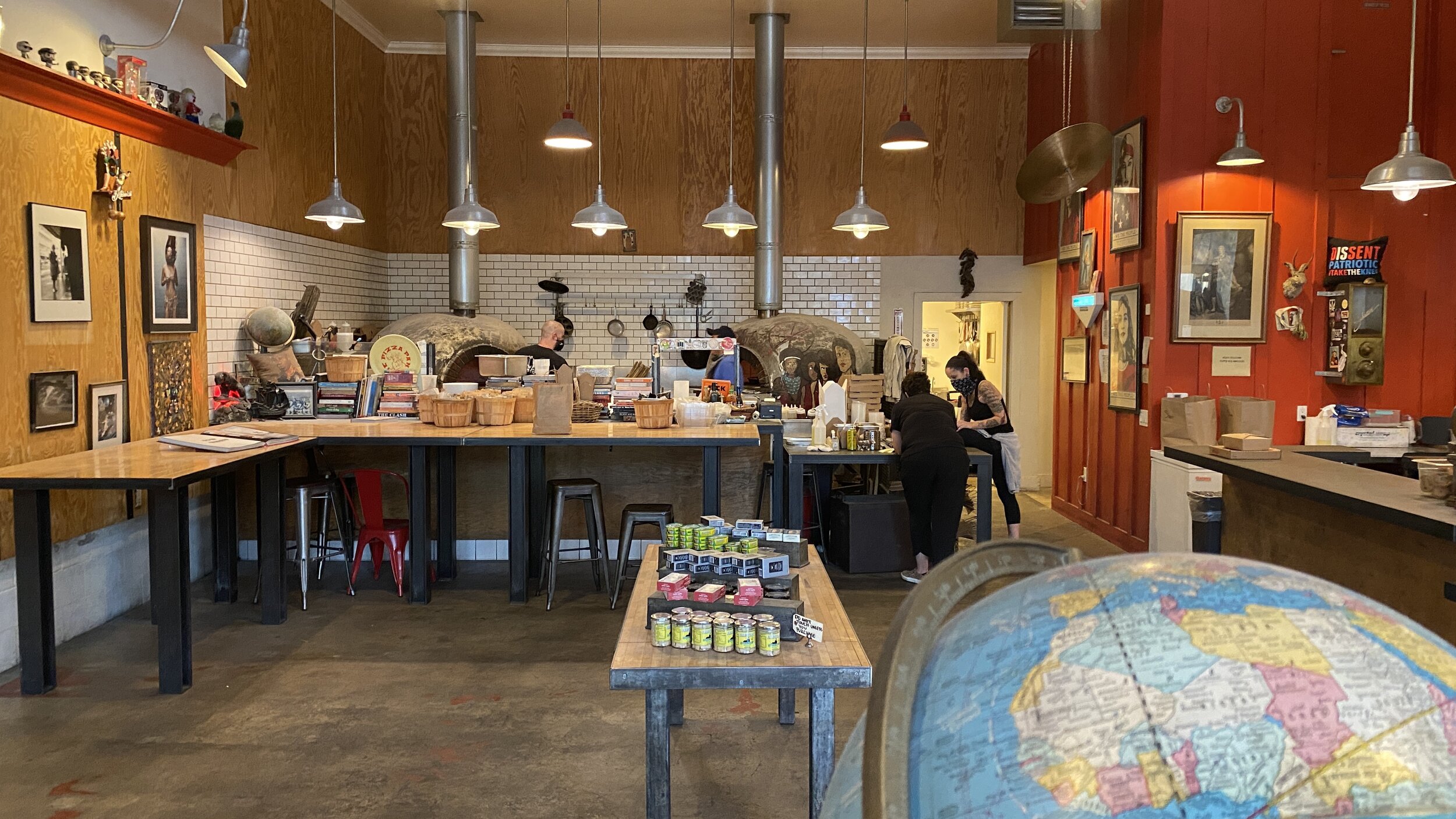


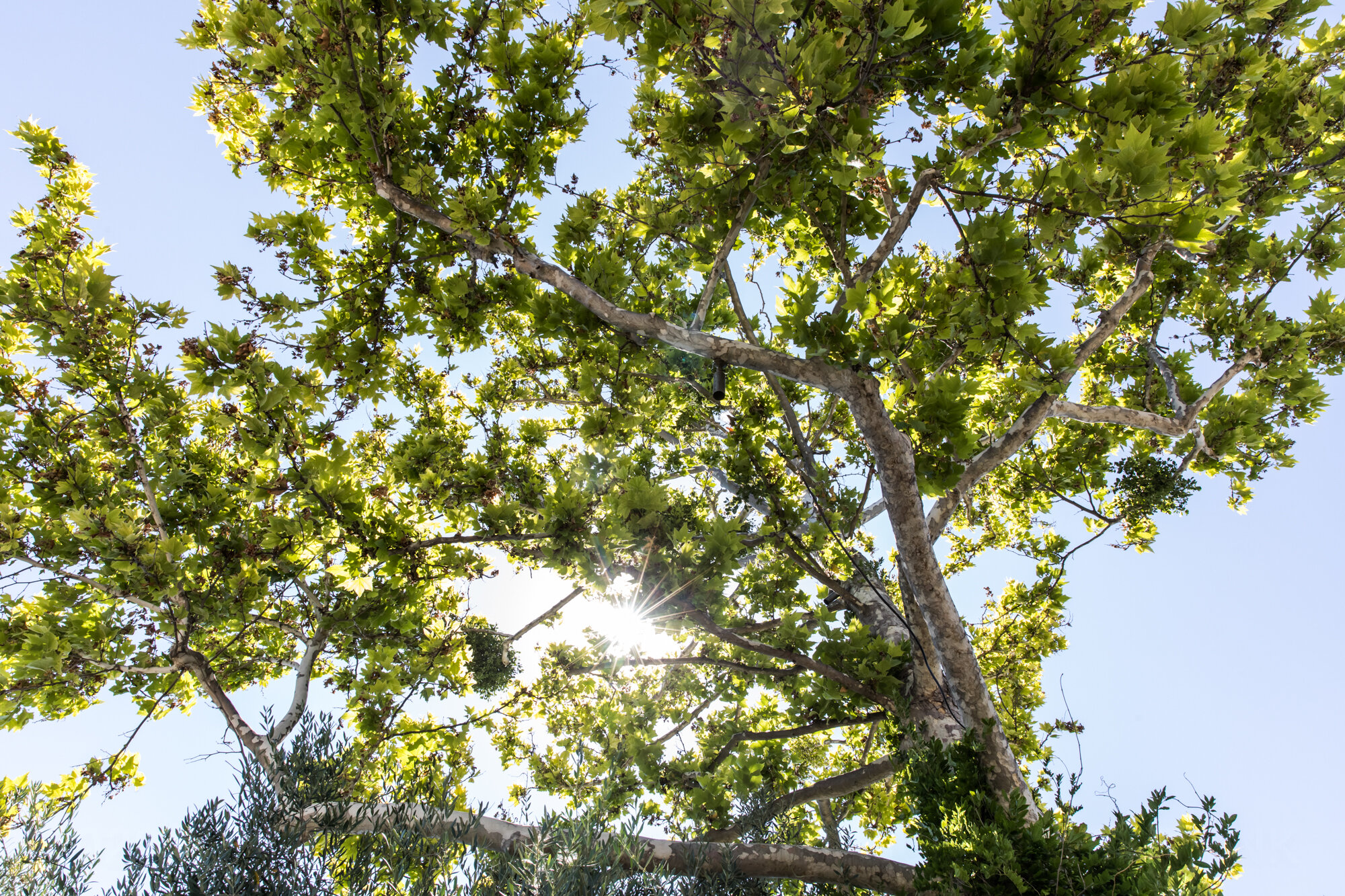
POSTCARDS FROM SANTA BARBARA WINE COUNTRY
Enjoy these shots of the magnificent Santa Ynez and Santa Maria valleys. We were in good hands thanks to Rex the Red Jeep.
Follow him on Instagram: @rextheredjeep
